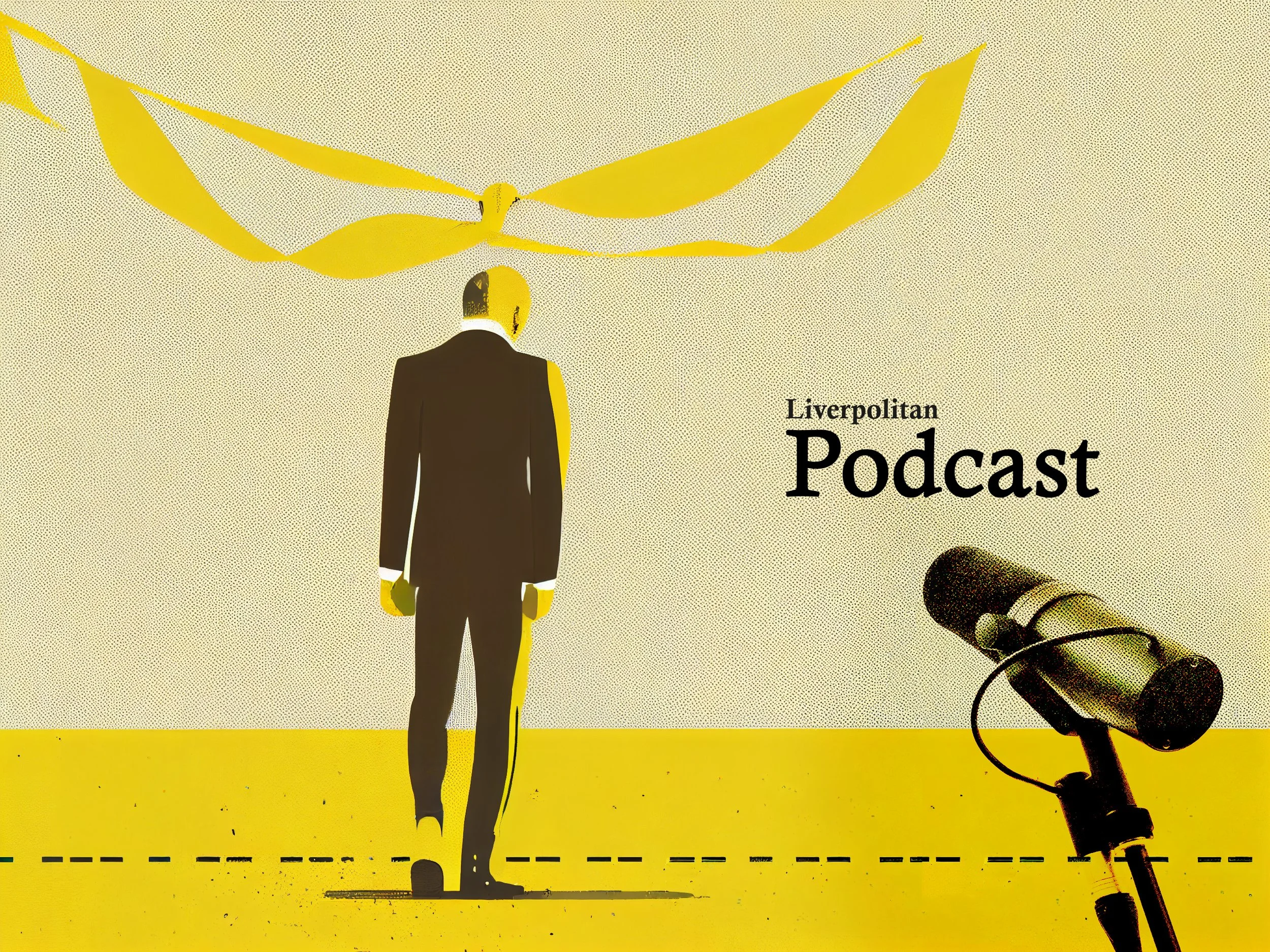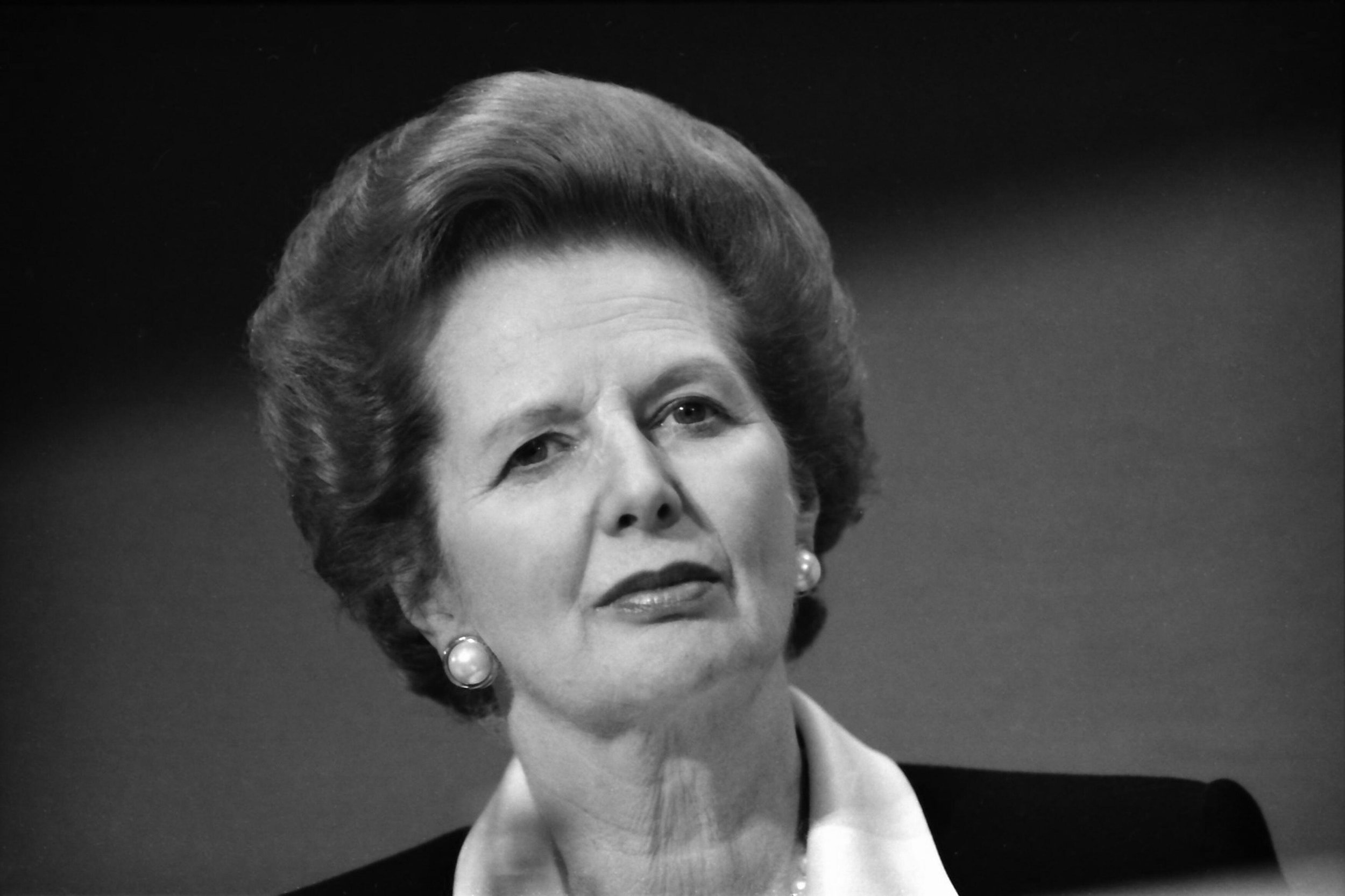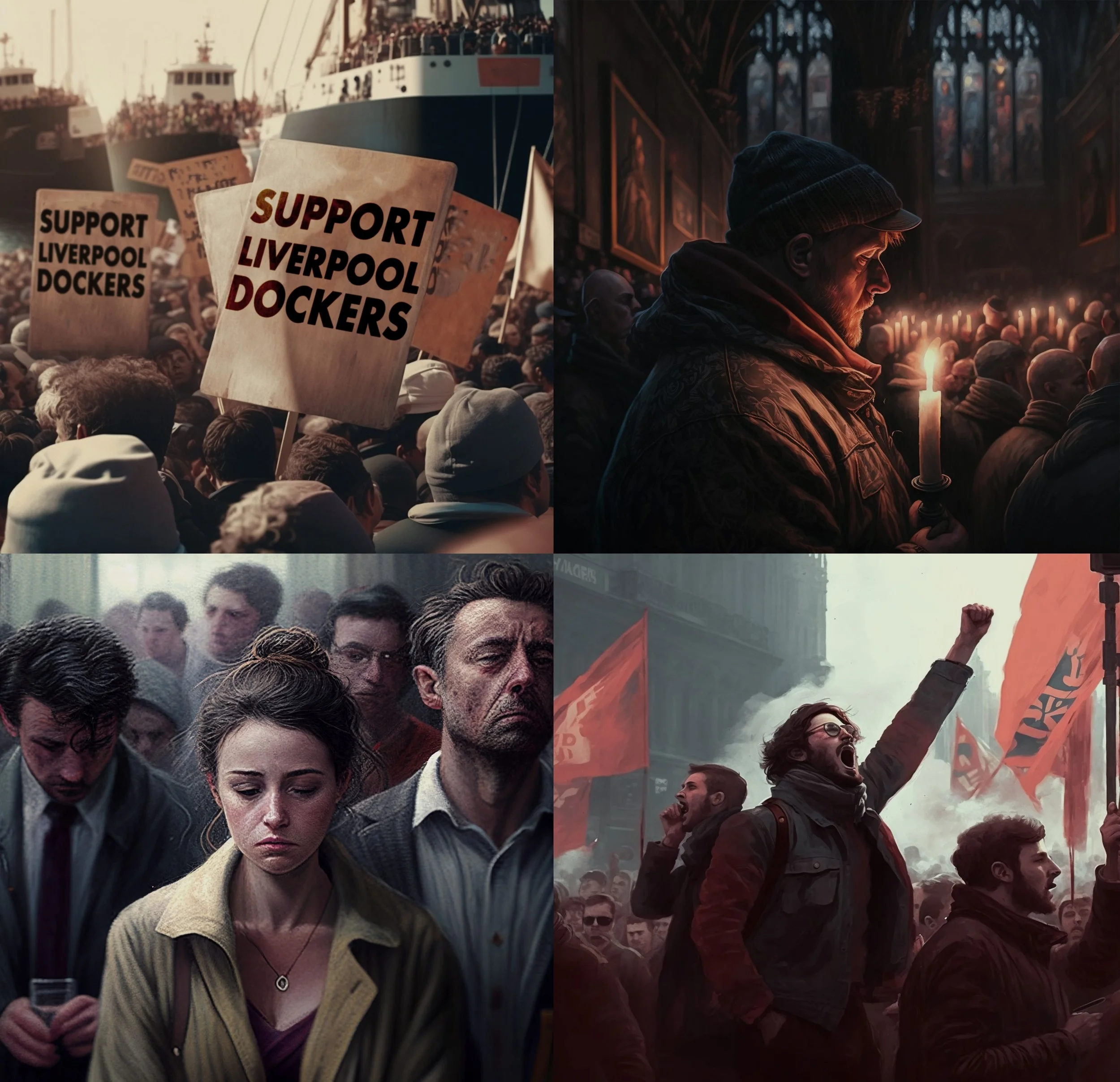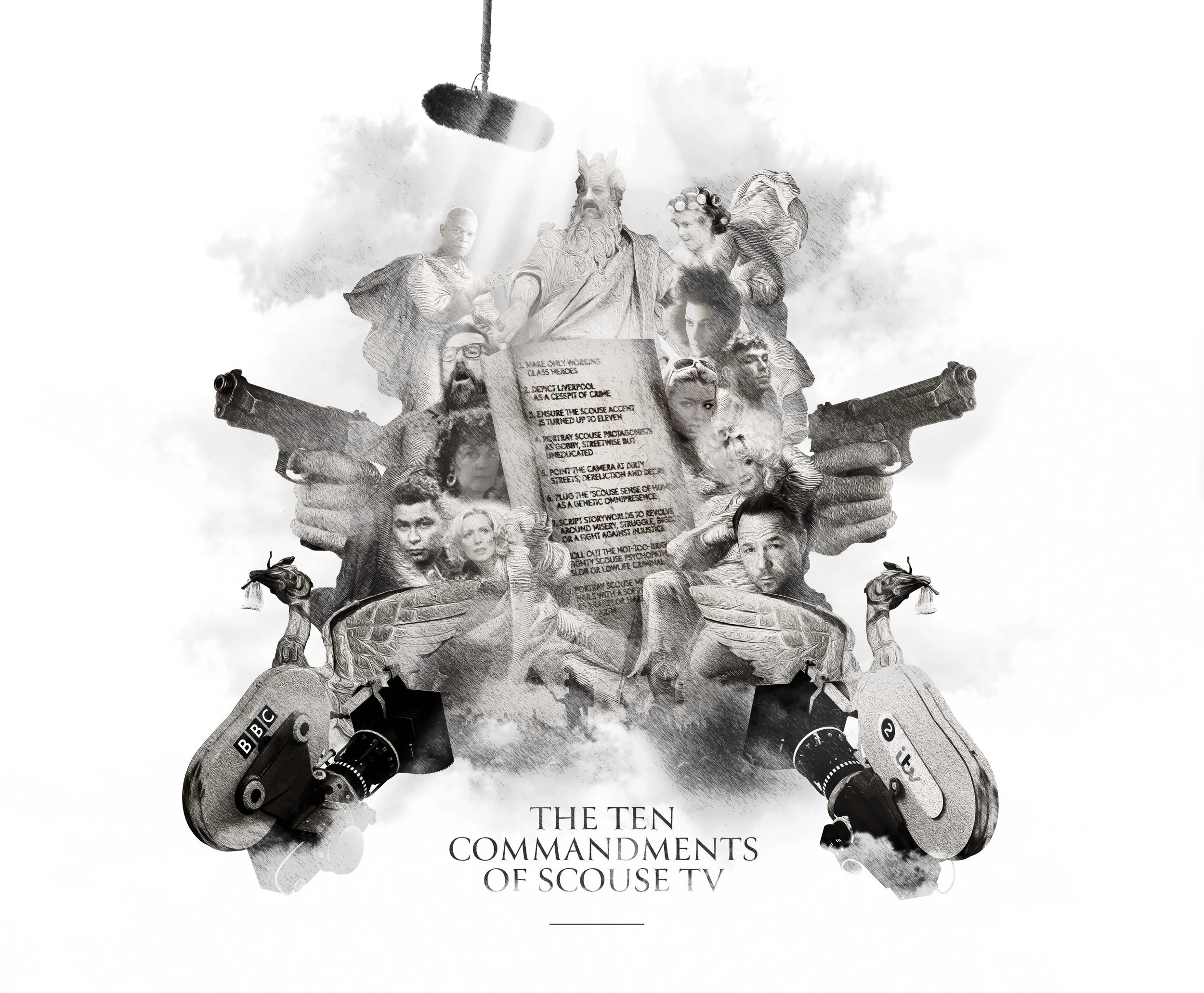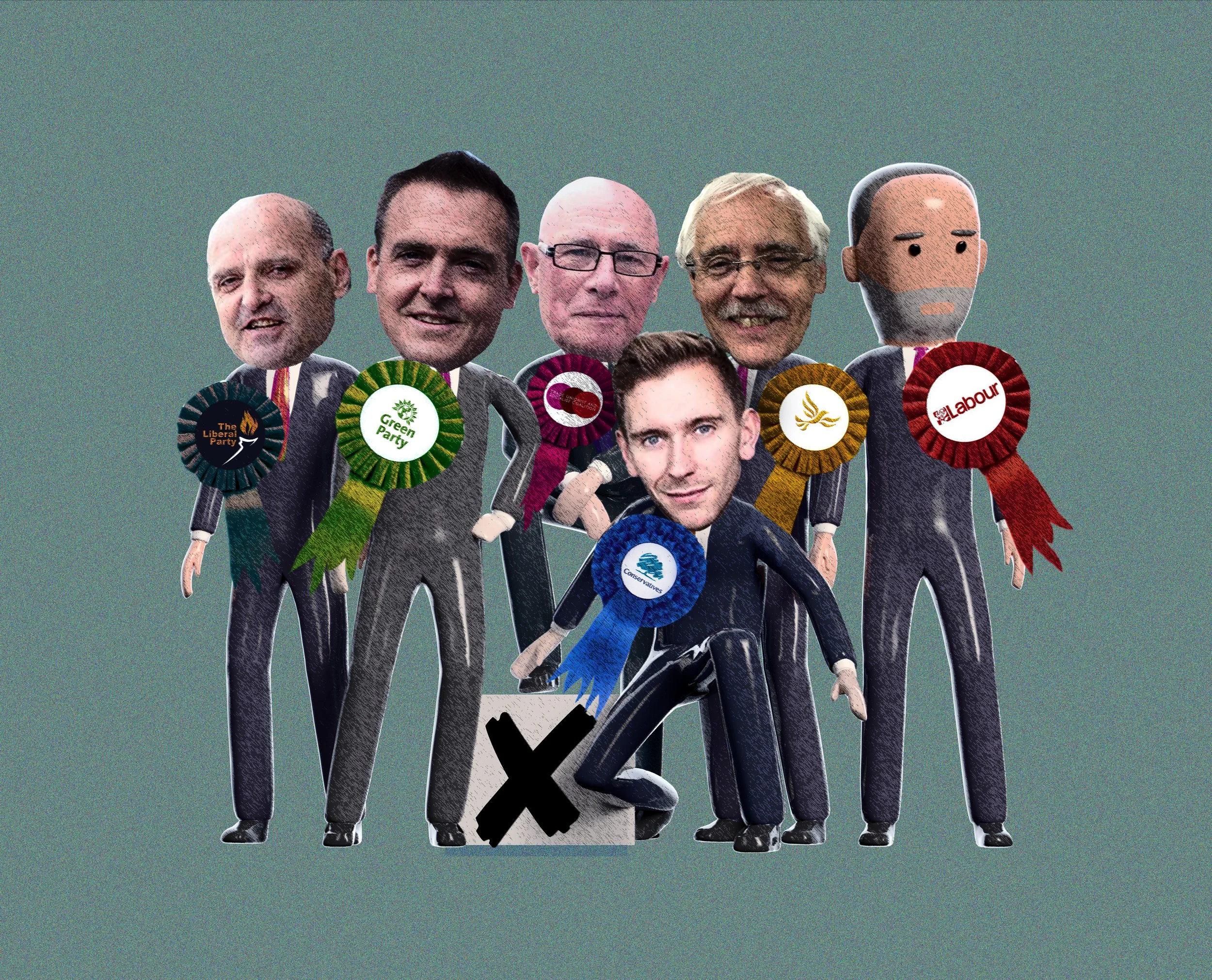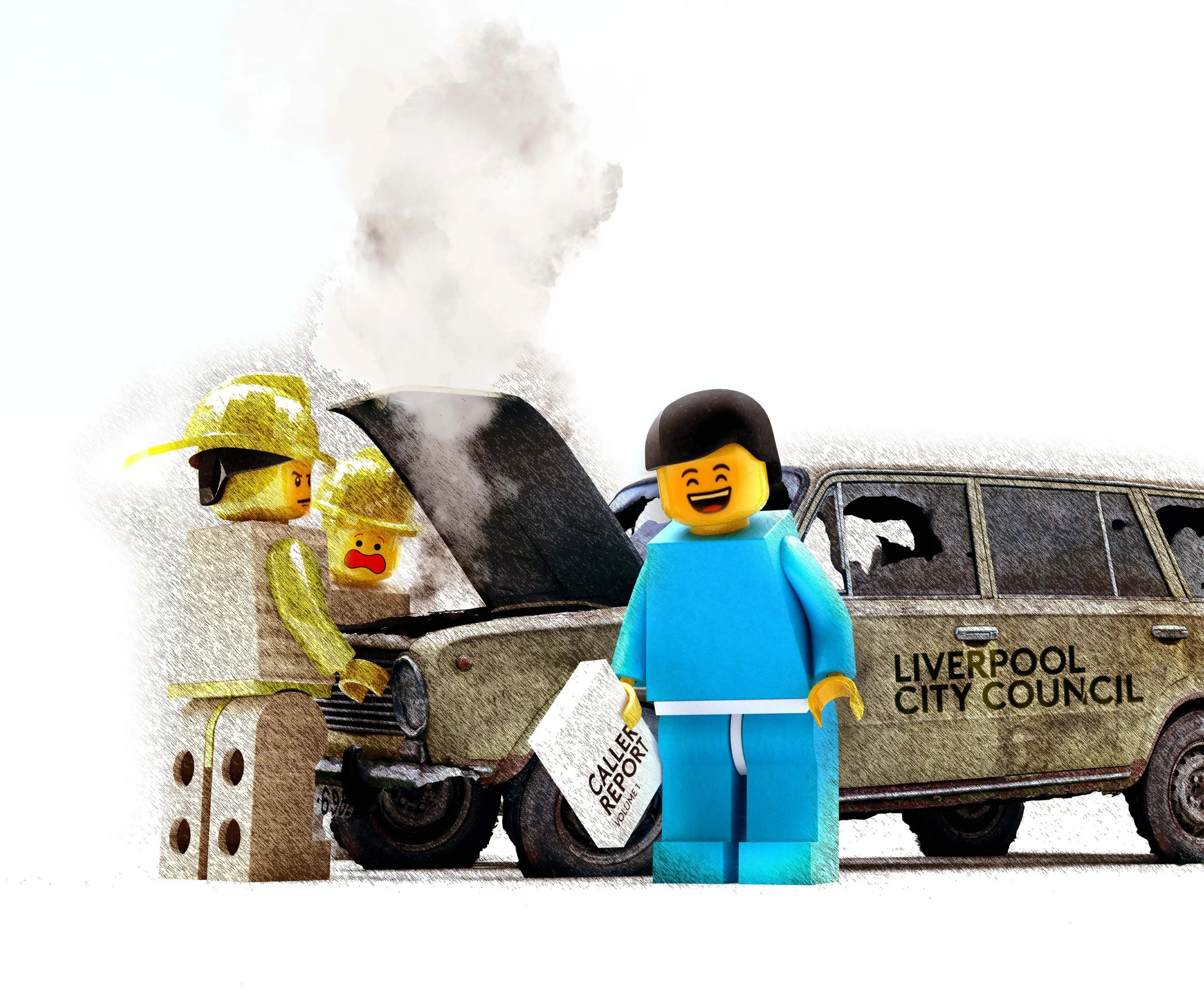Recent features
A new central Liverpool
As a youngster I’d often be dragged kicking and screaming into ‘town’ by my mother, first from Aigburth and later Speke on the 82 bus for a day traipsing around central Liverpool. The delights of these trips would include Solitaire, Dodo’s and Miss Selfridges (all high street names now consigned to the past) and we would start this bonanza at Lewis’ department store, jumping off the bus and into the throng of Saturday morning shoppers. We’d cut through Lewis’ giant store before heading to what was then the newly opened Clayton Square shopping centre and a supposedly refreshed green-glass clad St Johns Centre. From there the misery of shopping with your mum on a Saturday would commence.
Michael McDonough
As a youngster I’d often be dragged kicking and screaming into ‘town’ by my mother, first from Aigburth and later Speke on the 82 bus for a day traipsing around central Liverpool.
The delights of these trips would include Solitaire, Dodo’s and Miss Selfridges (all high street names now consigned to the past) and we would start this bonanza at Lewis’ department store, jumping off the bus and into the throng of Saturday morning shoppers. We’d cut through Lewis’ giant store before heading to what was then the newly opened Clayton Square shopping centre and a supposedly refreshed green-glass clad St Johns Centre. From there the misery of shopping with your mum on a Saturday would commence.
For me it was my first introduction to a big city centre alongside the odd jaunt over to Manchester and it was where I began to really think about architecture and the built environment. I’d see the different building styles and the variety of scale and begin to understand what fundamentally makes a city centre feel vibrant and appealing. Of course, today I’m a bit more travelled but I still think central Liverpool retains a bizarre and unique mix of architecture and energy that few European cities can rival.
Sadly today, Liverpool’s optimistic 1960’s shopping centre architecture and MDF pre-fab station retail (Liverpool Central) is all looking incredibly tired, like a patched up old car that’s had multiple uncaring owners. It still functions but it doesn’t look too good aesthetically.
Let’s take St Johns Centre, the largest indoor shopping centre in the city, squatting as it does right next to Liverpool’s front door to the world - Lime St. It’s also directly adjacent to some of the world’s finest neo-classical architecture such as St Georges Hall. This shopping behemoth, designed by architect James A. Roberts, landed ungraciously on the city in 1969 and has suffered two fires and several re-clads, leaving us with a mish mash of hasty spruce-up’s from owners who have lacked the deep pockets to do anything truly worthwhile.
The Centre itself was actually a much smarter affair when it first opened, before it was mauled by those who, in the 1990’s, thought faux-Victorian brick features would add a dash of sophistication. Still, in its defence St Johns remains very profitable for it’s owners, and this is likely the reason why it continues to squat on what should be a prime city centre site - a pound shop paradise instead of a Gucci-style emporium. It’s not all bad though, we were also gifted St Johns Beacon in 1969 as a glorified chimney to ventilate the centre. Better known today as the Radio City Tower, it’s become a landmark in itself, but also architectural marmite. Shorter than was originally intended, it’s short-lived rotating restaurant feature has long-since closed with its crown now defaced with radio antennae. Recently it was threatened with a quite frankly ridiculous zip wire proposal that would have seen the more adventurous amongst us flung across St Georges Hall before landing on top of the Liverpool Central Library, but thankfully, the subsequent uproar consigned the scheme to Liverpool City Council’s rather large book of planning mistakes.
St Johns Centre as viewed from St Georges Hall, 2020.
Clayton Square (left) and St Johns Centre (right), 2020.
St Johns is sadly not alone across this axis of tat that defaces central Liverpool. There is also the now, in my view, ruined Clayton Square. You might notice that I don’t refer to it as a ‘shopping centre’ because today it is a far cry from its intended design, having been boxed up internally for long standing retail anchor Boots the Chemist. The original grand and spacious feel of the 1990’s glass-covered mall lost behind MDF wall panels. The only redeeming feature of Clayton Square is its distinctive glass dome as a reminder of what once was. Again, the victim of a visionless ownership doing the bare minimum, this once impressive shopping centre has been turned into a forgettable cut-through.
Sadly today, Liverpool’s optimistic 1960’s shopping centre architecture and MDF pre-fab station retail (Liverpool Central) is all looking incredibly tired,…
The rap sheet of poor developments goes on…there’s the now wrecked former Blacklers store populated at ground level by the Wetherspoons pub chain and greasy low-end fast food joints. The unforgivebly bland and beige ION student accomodation scheme which replaced the Futurist (a building that still needed to go as it was collapsing). Its depressing cladded hulk hiding the even more depressing breeze block, creaking floor misery that is the Student ‘Castle’ behind. Then there’s the decaying former ABC art deco cinema on the opposite side of the road that has also fallen victim to numerous false dawns including plans to turn it into a TV studio. And who could forget the Holiday Inn towering above St Johns? For some bizarre reason, the hotel was painted black with white window frames and now provides a nice clean target for seagulls offloading their mess quite visibly across the facade, a delight I’m sure for those arriving at Lime St for the first time. But the pièce de resistance has to be the blue plastic cover stretching around the St Johns Centre car park as an apologetic gesture from the city leaders, who are all too aware of how much of an embarrassing eyesore this part of the city has become. No amount of repaving is going to fix that one.
I should stop there as the horrors of Williamson and Queens Squares with their out of town retail architecture are too much to bare. Even the entrance to Liverpool Central station and shopping centre is a sorry indictment of how quick the city is to demolish great architecture and replace it with worse. Too little is invested in Liverpool’s transport infrastructure today. If this was London, things would look very different.
Anyway, that’s enough of the critical; let’s move on to the constructive! At Liverpolitan, when it comes to architecture and urban design we at least like to have a stab at putting our money where our mouth is and so we’ve visualised what central Liverpool could potentially look like with a major, joined up and comprehensive redevelopment plan akin to Liverpool One.
The featured visuals explore how a forward-thinking city administration, alongside some ambitious local politicians and business leaders might take central Liverpool forward. The designs imagine a city centre unlocked from the obstructive mess that indoor shopping centres have created and moves instead to individual buildings and re-instated streets. Those buildings play host, not to the bargain basement, but to hotels, much needed Grade A flexible office and event spaces, small and medium-sized businesses. There’s also a leisure and media hub, landmark building to replace Clayton Square and ground-level, accessible market space to replace St Johns Market, now relocated to Williamson Square with the potential for it to spill out into the surrounding streets.
A re-imagined St Johns Beacon.
We imagine a new central Liverpool anchored by a new transport hub with a major expansion of Liverpool Central station returning this increasingly overcrowded and underinvested underground station in to something more in line with its former role as a national gateway with the completion of the Edge Hill Spur scheme to tunnel the Northern line out to Edge Hill and beyond (we’ll have an article on that at some point).
New and re-instated street connections between Queens Square and Central Station offer a clear line of sight through to the St Georges Hall portico. Rather than repeat the mistakes of St Johns, which for want of a better phrase, turned its architectural ‘arse’ to one of our grandest buildings, new structures will offer a proud face towards it. It’s almost as if architects in the 1960’s dismissed St Georges Hall as some imperialist soot-covered beast that would soon be demolished, and so contextually didn’t matter. Bulldozers were on the cards for Lime St’s Great Northwestern Hotel frontage, it it wasn’t for a campaign to stop them.
The design concepts envisage a far more porous central Liverpool with a new green space, elevated across several levels, looking out across St Georges Plateau. Hopefully it would act as an invitation to the now sad and disconnected lower London road to join the re-development party and come back into the city centre fold. Scale and world class architectural design would be the order of the day much like Liverpool One. Instead of leaving such an important project in the hands of a clique of local developers practice on a budget, International competitions would invite the world’s best to compete. Let the best designs and those with the best track records win out.
Lewis’, the former Blackers Store and the remaining streets between would all be spurred on to step-up and re-invent themselves. The result? A whole, new beating heart for central Liverpool, far more befitting of where the city wants and needs to be. A statement to anyone arriving at Lime St Station that Liverpool is a world class city that respects its heritage, but is determined to do everything it can to match and surpass its history. One that thinks bigger, and better.
It would be nice to get off the 82 bus one day and walk through a vibrant, modern central Liverpool - a place without chewing gum ridden pavements and hot dog stands. Liverpool One still set’s the bar for city centre regeneration. We did it before, we can do it again.
Michael McDonough is the Art Director and Co-Founder of Liverpolitan. He is also a lead creative specialising in 3D and animation, film and conceptual spatial design.
Share this article
WAH! What is it good for? Absolutely nothing
Are the Stop the Liverpool Arms Fair protests just another form of NIMBYism? Liverpolitan's Paul Bryan assesses whether ‘NOT IN MY LIVERPOOL’ is the real aspiration for many. Not in my backyard.
Paul Bryan
Are the Stop the Liverpool Arms Fair protests just a form of NIMBYISM?
If all it took to solve the world’s problems was a deep well of sincerity, then there can be no doubt that the latest demonstration in Liverpool against October’s planned AOC Europe 2021 Electronic Warfare Convention must be considered a stunning success.
Banners pleaded for ‘No more bloody wars’(is there any other kind?), ‘Nurses not Nukes’ (a reasonable-sounding request), and my personal favourite ‘Make scouse not war’. Although, it must be questioned whether vats of lamb stew, no matter how delicious, could form the basis of an effective defence strategy.
Of course, that sounds incredibly flippant and I don’t mean to be. There’s nothing wrong with wanting a better, kinder world. And anyone on the wrong end of a drone strike or a tyrannous regime could testify to the destructive power of modern armaments. That is, if they were still alive. But as I marched with and spoke to the demonstrators, I couldn’t help feeling a little confused. What is it exactly that they are asking for? That may seem like a stupid question. After all, the answer is found in the name of the campaign – Stop the Liverpool Arms Fair. And if I was in any more doubt the noisy protestor with the megaphone did her best to clear things up - the “What do we want? Stop the Arms Fair. When do we want it ? Now!” chant filled the air all day long. But to what end? If their pressure forced the ACC Liverpool Exhibition Centre to cancel the event, would one less piece of military hardware be sold in the world? Would the total weight of human misery be lightened in some way? If so, how?
Surely, the answer to those last questions would be “no” and “we’ve no idea”. Deep-down, I suspect the protestors know that too. To uncomfortably borrow an argument from the National Rifle Association for one moment, it’s people who kill people. The weapons are just the medium. And you can buy them in a lot of places. So if your actions won’t actually reduce violence in the places you protest to care about – Palestine, South Yemen, Syria – then what’s left? ‘NOT IN MY LIVERPOOL’ as one of the speakers shouted from the makeshift fire engine-come-stage, seemed to sum up the real limit of the aspirations for many. Not in my backyard.
The “What do we want? Stop the Arms Fair. When do we want it ? Now!” chant filled the air all day long. But to what end?
Which I suppose makes you wonder whether this is a futile cry in the Mersey wind – a posture to salve the conscience. Isn’t that the definition of virtue signalling?
In fairness, talking to people on the ground and listening to the speakers did reveal a whole poker hand of additional desires. Stopping arms sales to tyrannous regimes seemed to be a popular demand, while many (most) seemed to want to end all overseas arms sales full stop. I met a fair few who wanted to unilaterally dismantle the UKs armed forces and adopt a smile and hope strategy to international relations. Of course, given the profile of the crowd, plenty had their eyes on an even bigger prize. Nothing but the end of capitalism which they blame for all conflict, casually forgetting that the Romans and the Vikings were at it long before private enterprise became the de rigueur method of allocating society’s resources. I dare say the cave men were knocking each other on the head too.
My main sympathies are with those who argue for an end to foreign interventions. They hardly ever seem to make things better. Iraq, Syria, Libya and Afghanistan is quite the toll of failure. While the argument that it’s always about money and oil seem basic and vaguely ludicrous, surely the lesson from modern times is that you just can’t impose liberal values at the barrel of a gun in societies that don’t want them. More campaigning around that issue would, in my book at least, offer a far greater chance of easing the burden of war.
I met lots of wonderful people at the rally – union leaders, students, pensioners, a Sunday vicar, a veteran pilot of the Vietnam war, activists of different hues, and many more besides who had just come out for the day. But I didn’t for a minute think this was a typical cross-section of Liverpool society and I can honestly say, I have never met so many avowed pacificists in my life. Perhaps, this shouldn’t come as a total surprise. The Campaign Against The Arms Trade, which helped organise the event, has at least some of its origins in the Quaker movement – which has always taken the moral position that there is no justification for violence. Their’s is a utopian world where the lion lays down with the lamb. Where there is always room for talk. Where all it takes is an act of will to be better. “There is no place for war, only peace,” said an earnest Anya from Liverpool. And you can respect that view even if it feels counter to the sum weight of human history. She said there was no profit in war. Putting aside the obvious fact that there is, the forever outbreaks in conflict clearly show that someone benefits and it’s not always the obvious capitalist bogeymen.
While for many their pacifism seemed to be a point of idealistic principle, for others it was founded on personal experience, such as Anita from Wigan. I could really relate to her story. Her father served in the navy in WW2 and took part in the Battle of the Atlantic. He lost his youngest brother in the battle of Arnhem, while his two eldest brothers were captured and became Prisoners of War (P.O.W.) under the Japanese, which was generally not a pleasant experience. As a result, her father she said, “suffered from horrendous mental issues all his life and that is why I am anti-war.”
For Anita, being anti-war means laying down all of our nation’s weapons and refusing to fight. She wasn’t the only one who had this view. Far from it. Sadly, the road to hell is paved with good intentions. The answers to life’s questions are seldom as simple as taking a firm moral position, and laying yourself at the mercy of others can often have undesirable consequences. For every Gandhi espousing nonviolent protest, there are at least three murderous Pol Pots. Besides, in the 1980s, Labour’s flirtation with unilateral nuclear disarmament was electoral poison. Instinctively, most people are just comfortable with the idea that they need to be able to defend themselves. Barring the desperate, the zealots and those of pathological tendencies, nobody likes the idea of risking life and limb in bloody, brutal conflict. It really doesn’t have much to recommend it. But most of us know, that sometimes it’s inevitable. Sometimes you have to fight for what you believe in. Or be crushed. And I’d sooner go into a knife fight with a gun.
Labour’s flirtation with unilateral nuclear disarmament was electoral poison. Instinctively, most people are just comfortable with the idea that they need to be able to defend themselves.
While you could accuse the pacifists of naivety, they weren’t the only ones at the rally. In fact, they were almost certainly outweighed by the Left wing anti-war activists and their opposition to the arms fair appears to be far more tactical than moral, even if they wear all the accoutrements of offended outrage. In reality, they are seeking an altogether different type of utopia. The stars of the show included former Leader of the Labour Party, Jeremy Corbyn, Shadow Chancellor, John McDonnell, Labour MP Dan Carden, influential Liverpool Labour activist, Audrey White, and TV Actress, Maxine Peake. Unions such as the RMT were there too, and the Young Communist League and, of course, the Socialist Workers Party, who have more fronts than there are stars in the sky but whose banners are always recognisable by the use of that same give-away font. The list goes on – Black Lives Matter, CND, the Liverpool Friends of Palestine, and even a smattering of (although by no means all) local councillors. Liverpool Mayor, Joanne Anderson was notable by her absence.
Are these people pacifists? Well, some of them are certainly. The Left has a long tradition of being anti-war after all. But mostly they’re class warriors and their true beef is with the capitalist state. For them, the military is but an arm of the state and joining a campaign against an arms fair is an opportunity to turn the focus on imperialist warmongers, the profit motive and the racist ideologies that they believe underpin foreign adventurism. Hamstringing or completely eradicating the military and defence contractors is all part of the revolutionary playbook. It’s also a too-good-to-be-missed chance to prosecute their continuing and unhealthy obsession with Palestine. For them the campaign against the arms fair is but a proxy war, and that’s language they’d understand.
You can say what you want about Lenin, but at least he had some kind of plan. Granted it didn’t work out too well, but he did have the courage of his convictions. He was going to create a dictatorship of the proletariat, whatever it took. He didn’t hide his light under a bushel. But if Saturday was anything to go by, you can’t really say the same about the left wing demonstrators. Activist Audrey White may protest from the podium about the removing of the Labour Whip from the man who ‘still carries our (socialist) hopes and dreams’ (no I’m not talking about Keir Starmer), but the main focus of the rally was less about tackling the real causes of conflict and more about plugging into people’s innate sense of humanity. If Jeremy Corbyn was to be believed the weapons sold at the arms fair would be very targeted in the people they killed … “children in Gaza, children in Yemen, children in Somalia, children in Myannmar, children in so many places.” That really is some advanced technology. But is an exploitative pulling at heart strings any kind of argument?
Is this politics without the politics? Or is it lowest common denominator stuff, fetishizing on the weapons. Forget the context, feel the hurt.
One speaker, Haneen Awaad, 24 was introduced as a Palestinian Scouser – which feels like some kind of genetic super-breed of the oppressed
Corbyn was by no means the only one playing that game. One speaker, Haneen Awaad, 24 was introduced as a Palestinian Scouser – which feels like some kind of genetic super-breed of the oppressed. While describing herself as ‘born and bred in Liverpool’ she went on to say that all she’d ever known was ‘rockets, bombs, planes, tanks’. While the lives of Haneen’s grandparents have undoubtedly been touched by conflict (true of almost everyone of that generation in Europe) it seems unlikely that Haneen herself has had cause to fear military attacks in the streets of Anfield. Another speaker, Sarah Ashaika – a Syrian poet from Liverpool, who it was reported, has never been to Syria, regaled the audience with a poem that consisted of the names of dead Syrian children. Their involvement pointed to something hollow and performative about the rally in which people with no experience of the effects of weaponry gave testimony to the horrors of war.
Haneen excelled herself though. After telling the crowd how appalled she was at these ‘merchants of death’ visiting Liverpool, she then went on to evoke tropes about the Hillsborough disaster and the long-dead Prime Minister, Margaret Thatcher, to wrap up the (seemingly whole city’s) opposition to the arms fair as a typical scouse fight-back against injustice - which shows the way the region’s politicos continue to weave their own narrative of David and Goliath to forge a socially cohering, but ultimately toxic brand of localist exceptionalism. But more than that. Laying claim to Hillsborough to support your political campaign just felt ugly. But we shouldn’t be surprised – the idea that Liverpool is a continually oppressed city with a single socialist view of the world is the line we hear over and over again.
It was notable how often demonstrators talked in the royal ‘we’ to describe what they felt Liverpool did and didn’t want. Many seemed convinced they spoke for the wider community, one which was presented as uniformly ‘socialist’. When I asked Michael who lived in Liverpool city centre how he could be so sure his views were representative of the wider region, he seemed a little irked – “I know the temperature of the city,” he replied. Maybe. But there were, at a very generous count, 1000 people at the demo (most probably less) and it had been widely advertised. Maybe the Council should actually consult with the people before presuming on their opinions and bowing to the vocal outpourings of pressure groups. The local media don’t help in this regard, tending to treat the campaign with kid-gloves. Google it and try and find anything critical. It’s almost as if they are afraid that raising a sceptical eyebrow might invoke a storm upon their own heads.
The strongest argument I heard at the rally was the one that pushed beyond a mere repulsion at bloodshed. It goes along the lines that, we the UK, should not sell or assist the sale of arms to tyrannous regimes with a history of using those weapons on civilians. Saudi Arabia is in the dock for its military raids in the poverty stricken land of South Yemen. Israel attracts considerable ire for the overwhelming force it meets out to the Palestinians (although of course, many go much further than this in their criticism of the Israeli state), and there are other regions of concern too from the Turks treatment of the Kurds to the cruel power of the Syrian government in its suppression of internal opponents. What are we to make of this?
I’m a little torn. I am no friend of the anti-democratic Saudis and I find the concrete wall that separates communities in Israel to be offensive to every humanitarian instinct I can muster. There surely has to be some limits on who we sell weapons to – some minimum standards. But it’s most probably quite a complex calculation. Saudi Arabia is the regional counter weight to Iran, and Iran are a big part of the reason there is war in Yemen. So pick your poison. One thing I would say, is that for anti-imperialists, there seems to be a whiff of old school imperial attitudes in the presumption that it is up to the UK to determine who can and cannot be trusted with the weapons that we are content to arm ourselves with.
Regardless, countries like Turkey and Saudi Arabia are investing heavily in their own indigenous armaments manufacturing capabilities as Turkey’s development of bomber drones proves. And if not us, then the Russians, Chinese, Americans, French and more will only be happy to step in. Talk of the moral obligations of the ‘West’ is starting to sound increasingly redundant.
One thing I heard over and over again was the view that war and violence had no place in a socialist city. Yet anybody with a passing knowledge of the 20th century will know that socialism does not have a clean bill of health when it comes to oppressive violence. It has been estimated that up to 20 million Russian citizens died under Stalin’s Soviet reign of terror, possibly even more under the auspices of red China’s tyrannical Mau. Today, modern China has come under fierce criticism for forcing over a million Uyghur Muslims into euphemistically named ‘retraining’ camps. Of course, there would be a long queue of people lining up to absolve these societies as ‘not socialist’. But you can draw a line between the foundations of these states and the horrors that followed. Can we really afford to be so blasé and one-eyed about these crimes when we wrap ourselves in anti-war banners?
Besides, as I raised with a number of protestors in my interviews with them, Liverpool as a city does have a military history. Not only was it the headquarters for the crucial WW2 Battle of the Atlantic in which electronic radar technologies played a crucial role; not only does it provide significant numbers of soldiers, sailors and airmen to the British Armed Forces, but its shipyards at Cammell Lairds to this day service and manufacture navy vessels under Ministry of Defence contracts – something many locals seem to take great pride in. When the 65,000 tonne aircraft carrier, HMS Prince of Wales docked in Liverpool in February 2020, there was no shortage of visitors scrambling for tickets for the right to board. The truth is, Socialist Liverpool has a nuanced relationship with the military, but many of the anti-war demonstrators seemed keen to airbrush that fact.
I wonder what you think about all of this if you work in the local defence supply chain? According to Ministry of Defence data for 2019/20, the MOD spent £2.2bn in North West England supporting 15,000 direct jobs and many more indirectly across the whole industry. These are not small numbers and they provide some interesting context to a conversation I had at the demonstration with Dave Walsh, the President of the Liverpool Trades Council and Daren Ireland, an RMT Union Regional Organiser. They admitted that their organisations have been burning the midnight oil for years trying to figure out what to do about the thorny issue of those union members working in the defence industry. How could they square the circle of supporting their members while fighting militarism? Dave admitted that they’d finally arrived at a position. They recognised these were skilled jobs and recommended that those skills be turned away from defence to ‘socially useful’ sectors such as healthcare or for fighting climate change. I wonder what it’s like to be represented by a union that is ashamed of your existence?
Idealism can be like a drug. It makes you feel good – you’re a good person. You’re on the right side of history. But all the while history is going on about its business without you because you’ve stopped engaging with the world as is, in favour of that quick hit of righteousness. I don’t doubt that it would feel good to kick the Electronic Arms Fair out of Liverpool. But it would be a victory of dubious benefits in favour of principled naivety and leftist entryism. Not one less weapon would be sold in this world. But at least the protesters would be able to say, ‘Not in my Liverpool’. Not in my back yard.
~
The Stop The Liverpool Arms Fair demonstration took place on Saturday 11th September 2021. To hear what the protesters had to say in their own words, listen to this special podcast, Better To Break The Law Than Cause A War.
Paul Bryan is the Editor and Co-Founder of Liverpolitan. He is also a freelance content writer, script editor, communications strategist and creative coach.
Share this article
Don’t knock it till you’ve tried it!
Following the announcement that UNESCO had stripped Liverpool of its World Heritage Status, there have been a myriad of social media posts and articles about what this means (or doesn’t mean) for the City. Some expressed mild disappointment and some adopted a more ‘we’ll be fine without it’ approach.
Lynn Haime
Following the announcement in July that UNESCO have stripped Liverpool of its World Heritage Status, there have been a myriad of social media posts and articles about what this means (or doesn’t mean) for the City. Some expressed mild disappointment and some adopted a more ‘we’ll be fine without it’ approach.
It did, however, make me pause to consider my city - its charms, shortcomings, history and future and ultimately conclude that, once again, the external perception of Liverpool will have unfairly taken a knock.
Having lived, studied or worked in the South, Birmingham and Manchester over the past 20 or so years it reminded me that, unlike any other city, we regularly have to defend our position and correct misinformed views of Liverpool. I have penned this article for colleagues, friends and family who have either never visited the city, or have not revisited it for years. Some of the views of those who are unfamiliar with Liverpool are exacerbated by the consistent and inaccurate stereotypes from the ill-informed. Hangovers from days of rioting and overtly vocal politicians dominating our screens in the 80s, to the more light hearted, tracksuit-donning, curly wig-wearing characters portrayed on television – admittedly very funny at the time, but over 30 years later, they are just an irritating perpetuation of an image which couldn’t be further from today’s Liverpool.
In 2008, Liverpool was European Capital of Culture which catapulted the city to another, much more positive level of exposure. The significant impact of that is still felt today - on cultural initiatives, regeneration, visitor numbers and economic growth. Clearly all is not yet perfect and we sighed in collective exasperation at the recent exposure of questionable practices from certain high-level public servants. It was a setback caused by a very small minority which unfortunately reinforced some of those outdated stereotypes. The majority of us work hard to promote the city, encourage investment and enhance the already exciting opportunities which exist. But this was a disappointing blow. However, it is being addressed admirably by Tony Reeves, the current Chief Executive of Liverpool City Council. He has helped to expose the previous, less scrupulous practices and promote a more transparent and trustworthy platform on which to build.
…we regularly have to defend our position and correct misinformed views of Liverpool.
One of the key concerns cited by UNESCO was the development of Everton’s new 52,000-capacity stadium on the waterfront. Its official address is Bramley-Moore Dock, which Wikipedia describes as ‘a semi-derelict dock on the River Mersey’. It’s a stone’s throw away from Bootle which remains one of the most deprived areas in the UK. Everton FC have jumped through planning and heritage hoops and will be investing over £500m in developing their new stadium, which will deliver an estimated £1.3bn boost to the local economy, create more than 15,000 jobs and attract 1.4m new visitors to the city.
The project budget includes £55m for ‘preserving, restoring and celebrating the heritage assets’ and is located in an unloved part of town and what was the ‘buffer zone’ of the World Heritage designation. The main UNESCO site was focused elsewhere, around the majestic Three Graces (The Grade 1 listed Royal Liver Building, Port of Liverpool and Cunard buildings). Regardless of UNESCOs decision, all three remain standing proud and unaffected, overlooking the Mersey and adjacent to the magnificent Royal Albert Dock.
The area connecting Everton’s new stadium to that world famous waterfront is largely under the ownership of Peel Land & Property and their £5.5bn Liverpool Waters project. Should that scheme ever go-ahead, it will bring further regeneration and investment to entirely new communities along the waterfront, providing a vital link between the city centre, the northern fringe and the new stadium.
Everton FC have jumped through planning and heritage hoops and will be investing over £500m in developing their new stadium…
Also in the mix is the Stanley Dock and Ten Streets Regeneration area including the Titanic Hotel, one of Liverpool’s most popular stay-overs and the Grade II Listed Tobacco Warehouse, Europe’s largest brick building and soon to be home to 538 apartments and 100,000 sq ft of new commercial space. My own view, echoing many others, is that whilst UNESCO endorsement was nice to have, this investment and regeneration will be far more wide-reaching, directly beneficial for the city and a real catalyst for future growth. I would encourage anyone who hasn’t visited Liverpool to come and see it for themselves. I’ve found over the years that those with negative views of the city are those least familiar with it. It seems this can also be said of UNESCO who made their decision without setting foot here in over 10 years.
A future Liverpool skyline after UNESCO?
The overwhelming majority of comments on the removal of World Heritage Status expanded on the many virtues of Liverpool, far more eloquently than I could. The culture, history, architecture, the magnificent cathedrals, the waterfront, two world-class football clubs, successful universities, its extensive talent pool, world leading science institutions, incredible nightlife, and the amazing people. Of course, no commentary on Liverpool would be complete without mention of the four sons of the city. The most successful group of all time and famous the world over, The Beatles still generate around £20m per year for Liverpool through tourism. The removal of our World Heritage badge will not deter the streams of overseas visitors hopping on to the Magical Mystery bus to Penny Lane, Strawberry Fields, The Cavern, and the birthplaces of John and Paul. As one of my southern colleagues mentioned, Abbey Road… I pointed out that this was in London and rested my case.
Lynn Haime is a Partner at commercial property consultancy, Matthews and Goodman. She heads up their Liverpool office.













